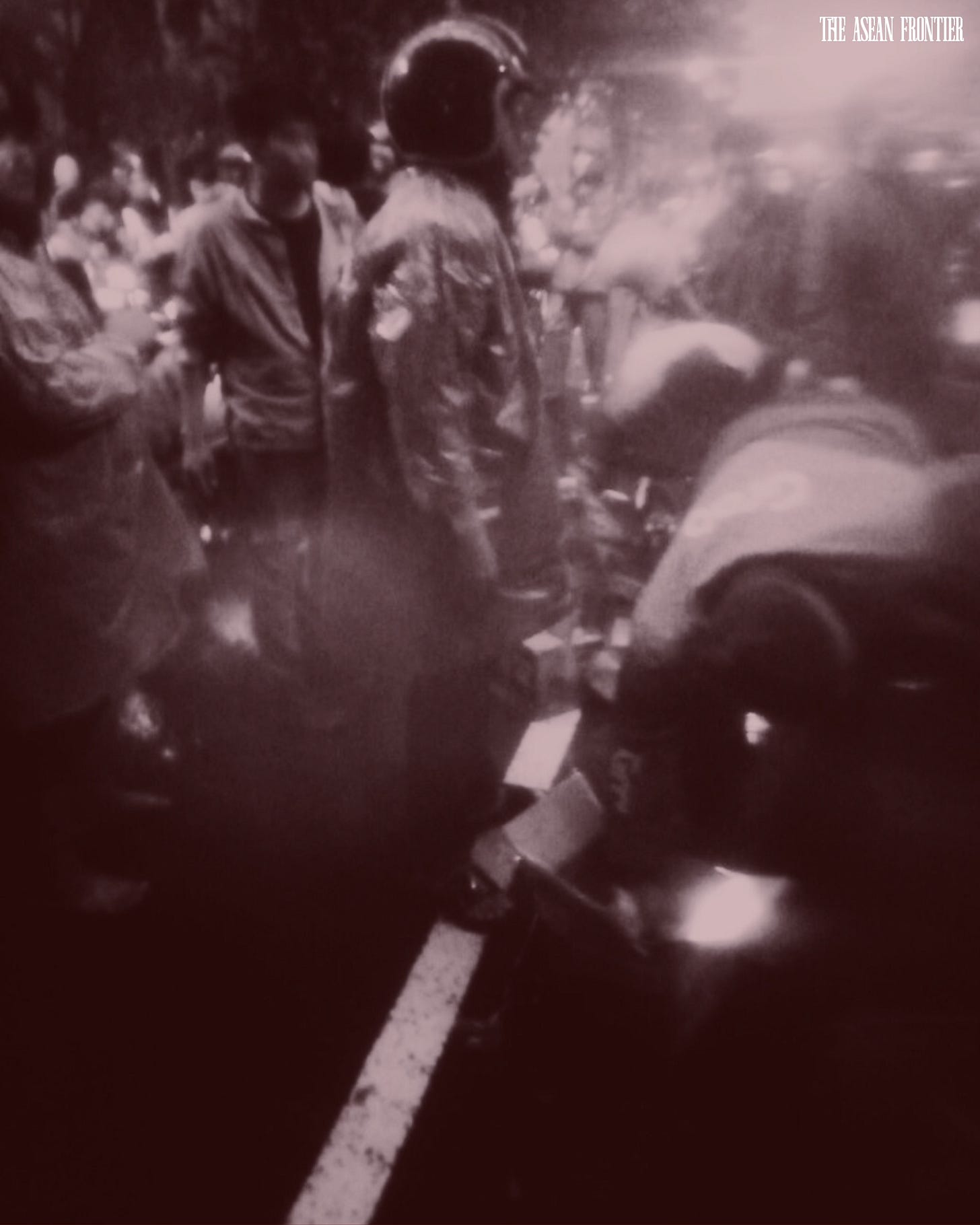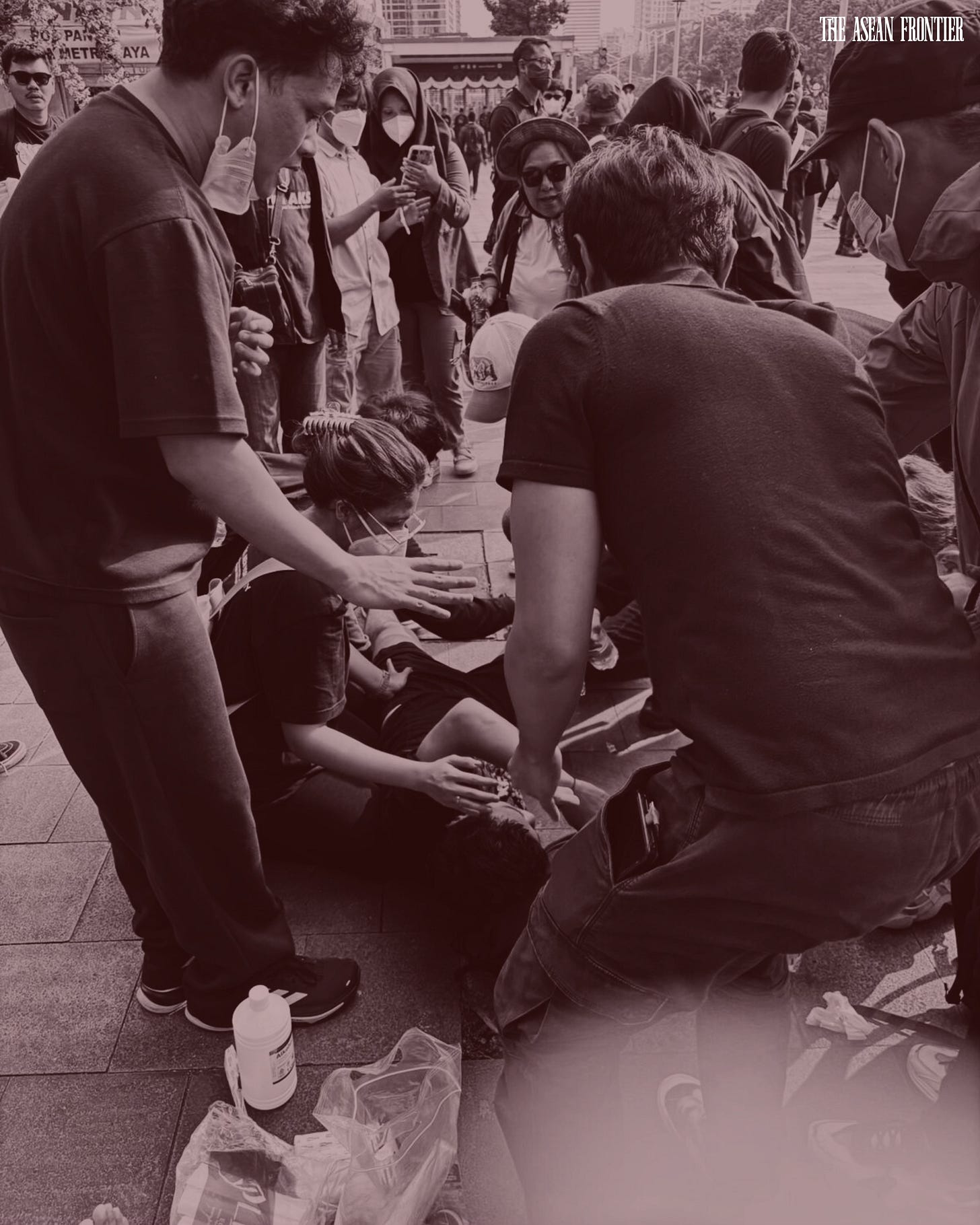Affan Kurniawan and the Choice Facing Indonesia
On-the-ground reflections from Jakarta’s streets of protest
An Op-Ed by Hree Putri Samudra, TAF Correspondent for Indonesia
Affan Kurniawan’s death, at just 21 years old and while trying to make a living, was not only tragic but also a turning point for Indonesia. It was a violent, unexpected event that served as what sociologist James Jasper calls a “moral shock,” ripping away the thin veil of democratic pretence and exposing the chasm between the state’s stated values and its brutal practice. The ensuing national upheaval, which found its voice in the digitally-native “17+8 People's Demands”, is far more than a fleeting protest. What looks like an intelligence failure is not about a lack of data, but about blindness to the fact that public trust had already been crumbling.
From an intelligence perspective, what transpired in late August 2025 was a classic "strategic surprise." This was not because the indicators were absent, they were flashing red for anyone willing to look, but because the state's sensors were calibrated only to monitor dissent, not to comprehend its origins. The public discourse, now thick with talk of a "dalang" or mastermind and foreign interference, is a textbook case of what organizational theorist Chris Argyris termed "defensive routines." These are institutional mechanisms designed to deflect from the embarrassing truth that the state was surprised by the depth of public fury simply because it had stopped listening.
The demands themselves offer a clear diagnosis of the nation's health. The 17 short-term points demand immediate relief from a state that has become both predatory and parasitic. They call for the military to be pulled from civilian policing, for an independent team to investigate state violence, and for the obscene perks of parliamentarians to be slashed. What the protesters have laid out in their long-term vision is nothing short of a blueprint for democratic survival. They demand a wholesale renovation of political parties that have grown detached from society, the empowerment of watchdog institutions that have been defanged, and the long-delayed Asset Forfeiture Bill to strike at the heart of corruption. Far from being abstract, their demands reflect practical goals that they believe must be met if the nation is to avoid a deeper collapse into this malignant state of being.
This is the public eruption of what political scientist James C. Scott famously called "hidden transcripts," which are the private resentments and critiques of power that subordinate groups voice only amongst themselves. For years, the hidden transcript in Indonesia has been one of deep resentment toward an elite class seen as insulated, corrupt, and callously indifferent. The August crisis laid everything bare. It came through in the voice of Mr. Selamet, a 54-year-old ojek driver that we interviewed, a friend of Affan, who spoke with grief and a tired face that cut through any analysis. He asked, almost to himself, “Kenapa rakyat kecil kayak kita (ojol) selalu jadi korban?” Why is it always the poor like us (the ojek drivers) who end up paying the price? It was a plain sentence, yet it said what people had been holding inside for years.
At the same time, the unrest unfolded in ways that fit what Charles Tilly once described as the “repertoire of contention,” an evolving set of tools people use to push back against power. Protest found new ground online, where solidarity spread through symbols as much as through words. People began changing their profile pictures to pink or green, and each color started to carry its own meaning. Pink was for ordinary people who dared to stand up to the state. Green was linked to Affan and countless other drivers, men and women who worked long hours on the road and earned respect through their endurance. What emerged was more than a passing wave of anger and collective empathy.
Besides, the strength of the protests came not only from street demonstrations but also from the way students and workers used digital tools to plan, share information, and keep the energy alive. This gave the movement a structure that kept it from fading once the initial anger passed. By attaching deadlines to their 17+8 demands, they shifted from protest as mere spectacle to protest as negotiation, ensuring that the state could no longer wait them out. This structure seized the initiative and, in military theorist John Boyd's terms, allowed the protesters to gain control of the "OODA (Observe, Orient, Decide, Act) loop," forcing a lumbering state apparatus into a reactive, defensive posture.
When the protests broke out, the government fell back on the same old script: securitization. President Prabowo spoke of “makar” (treason) and the “terrorism act,” turning political anger into a supposed security threat. This allows the state, as the Copenhagen School of security studies explains, to justify extraordinary measures while sidestepping the messy work of democratic negotiation. But for a student in Bandung, securitization is not an abstract word. It is the burning in their eyes from tear gas, it is the terror of seeing guns pointed at their friends. Edward Luttwak once described this as the paradox of strategy: what looks like victory in the moment can destroy the very legitimacy that leaders depend on. Each canister of tear gas and each arrest of an activist only validates the protesters' core claim that the state no longer serves the people, but views them as an enemy to be controlled.
The decision to send in the military alongside the police is troubling, as it suggests a collapse of what Samuel Huntington called the principle of “objective control” that keeps civil-military relations healthy. Mixing the roles of civilians and the military does not make the country safer. When the lines between soldiers and civilian leaders are crossed, the result is not security but fragility. Civilian authority loses legitimacy, the military is pulled away from its proper mission, and society is left vulnerable to the rise of authoritarian control.
If we only point to the careless remarks and the showy lifestyles of parliamentarians, then we miss the deeper illness that drives people into the streets. Much has been made of parliament’s lavish housing perks, but people know that this controversy is only the tip of the iceberg. People may fume over the Rp50 million allowance, but everyone knows that is only a small glimpse of a much bigger theft of public wealth that happens every day through collusion, favoritism, and a culture of impunity. Anger in the streets is not driven by resentment of luxury alone. It comes from the realization that such privileges show how far leaders have drifted from the people they are meant to serve. Indonesia’s survival is threatened not by the unrest on the streets but by the moral collapse at the center of its leadership.
This is where the real intelligence failure lies. Government agencies spent their time measuring protests by size and by hashtags instead of paying attention to the deeper crisis they revealed. Fukuyama calls this “political decay,” which is the slow erosion of trust in institutions, the capture of governance by elites, and the steady breakdown of accountability. What makes a country strong is not its ability to intimidate dissenters, but the credibility of its courts, its parliament, and its watchdogs- the institutions that guarantee justice and protect ordinary people from abuse. When those institutions are captured by oligarchic interests, when nepotism becomes the organizing principle of governance, and when the law is a tool to protect the powerful rather than the vulnerable, the state hollows out from within. What emerges is what Indonesians call rumput kering, or dry grass: a society that has been weakened by layers of injustice and inequality until it becomes fragile enough that even a small spark can set it ablaze.

The death of Affan Kurniawan was that spark. But his killing did not just catalyze anger; it catalyzed a pre-existing structural analysis among Indonesia's precarious working class. It dramatized, in a horrifyingly literal way, a hierarchy of risk where officials are shielded while danger is externalized onto those who can least afford it. The spontaneous, transnational solidarity that followed, where strangers across Southeast Asia sent food orders to support protesting drivers, was a stunning reversal of what anthropologist James Ferguson labels as "the anti-politics machine." Technical platforms designed for commerce were repoliticized and used to highlight the human cost of a broken economic model.
Indonesia is now at a precipice. For the Prabowo administration, the crisis represents a defining moment. It can treat the protests as an excuse to clamp down harder, strip away civil liberties, and rely even more on the security apparatus. Alternatively, it can choose the far more difficult, but ultimately more stable, path of institutionalization, by treating the 17+8 demands not as a threat, but as a roadmap for survival.
This demands more than performative apologies and the theatrical firing of a few disgraced politicians. It demands what is known in strategic planning as a "radical break," a fundamental shift in direction. The government cannot claim to be serious about reform unless it restores the Asset Forfeiture Bill as a clear marker of its commitment to tackling corruption. It means a total overhaul of the political financing system that creates indentured politicians. And it requires security and intelligence communities that understand that their mandate in a democracy, as Sherman Kent argued, is to provide knowledge that enables wise policy, not capabilities that enable repression.
The ghost of Affan Kurniawan now haunts the Indonesian Republic. His death will either be remembered as another tragic milestone in a slow democratic decay or as the catalyst for a renewal that pulled the nation back from the brink. Ultimately, the protesters have already spoken. The unanswered question is whether Indonesia’s leaders will recognize their responsibility to the public, or will continue to govern in the service of themselves alone.




Thank you for this inspiring op-ed